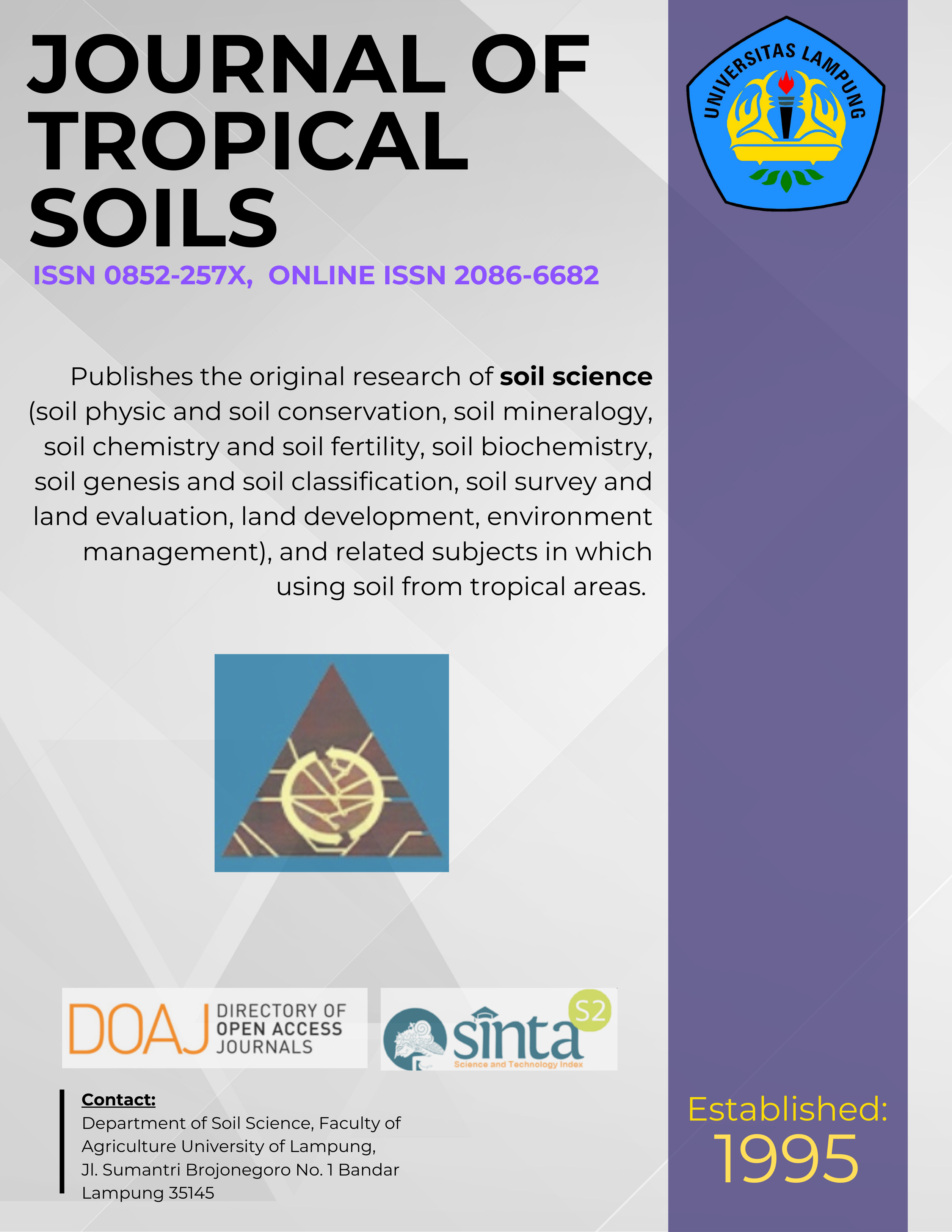CO2 Flux from Tropical Land Uses on Andisol in West Java, Indonesia
Main Article Content
Abstract
This study measured CO2 flux by segregating effect of root respiration and organic matter decomposition by microbes. The study involved a mineral soil containing high organic matter (Andisols), in the tropic devoted to different land uses i.e. natural forest, tea plantation, and horticultural farm CO2 emission from those land uses were compared to from peatland. Observed CO2 fluxes came out in the following order: bare plot  7.32, tea plantation  10.22, horticultural farm  15.60, and natural forest  15.62 Mg C-CO2 ha-1 yr-1. While, root respiration accounted for substantial proportions: tea plantation  28%, horticultural farm  53%, and natural forest  53%. Soil temperature demonstrated a significant positive correlation with the CO2 flux, except in the natural forest. On the other hand, water-filled pore spaces displayed varying correlation with site CO2 flux: a negative relationship in both bare plot and tea plantation, appreciably positive in the horticultural farm, and weakly related in the natural forest. Soil respiration and C-organic content appeared to be strongly correlated; the rate of soil respiration increased with higher C-organic content. In field, CO2 flux from organic matter decomposition in Andisols, Latosols, and peatland ranged from 5.35-13.22 Mg C-CO2 ha-1 yr-1, with root respiration contributing most of the flux, which was, in turn, influenced by type vegetation, humidity and soil temperature.
Keywords: CO2 flux; decomposition; horticultural farm; natural forest; organic matter; tea plantation
[How to Cite: Jon H, Suwardi, B Sumawinata and DPT Baskoro. 2014. CO2 Flux from Tropical Land Uses on Andisol in West Java, Indonesia. J Trop Soils 19: 121-130. Doi: 10.5400/jts.2014.19.3.121]
Â
Â
Â
Â
Downloads
Article Details
Section
License for Authors
Authors who publish with this journal agree to the following terms:
- Authors retain copyright and grant the journal right of first publication with the work simultaneously licensed under a Creative Commons Attribution License that allows others to share the work with an acknowledgement of the work's authorship and initial publication in this journal.
- Authors are able to enter into separate, additional contractual arrangements for the non-exclusive distribution of the journal's published version of the work (e.g., post it to an institutional repository or publish it in a book), with an acknowledgement of its initial publication in this journal.
- Authors are permitted and encouraged to post their work online (e.g., in institutional repositories or on their website) prior to and during the submission process, as it can lead to productive exchanges, as well as earlier and greater citation of published work (See The Effect of Open Access).
License for Regular Users
Other regular users who want to cite, distribute, remix, tweak, and build upon author’s works, even for commercial purposes, should acknowledge the work’s authorship and initial publication in this journal, licensed under a Creative Commons Attribution License.

